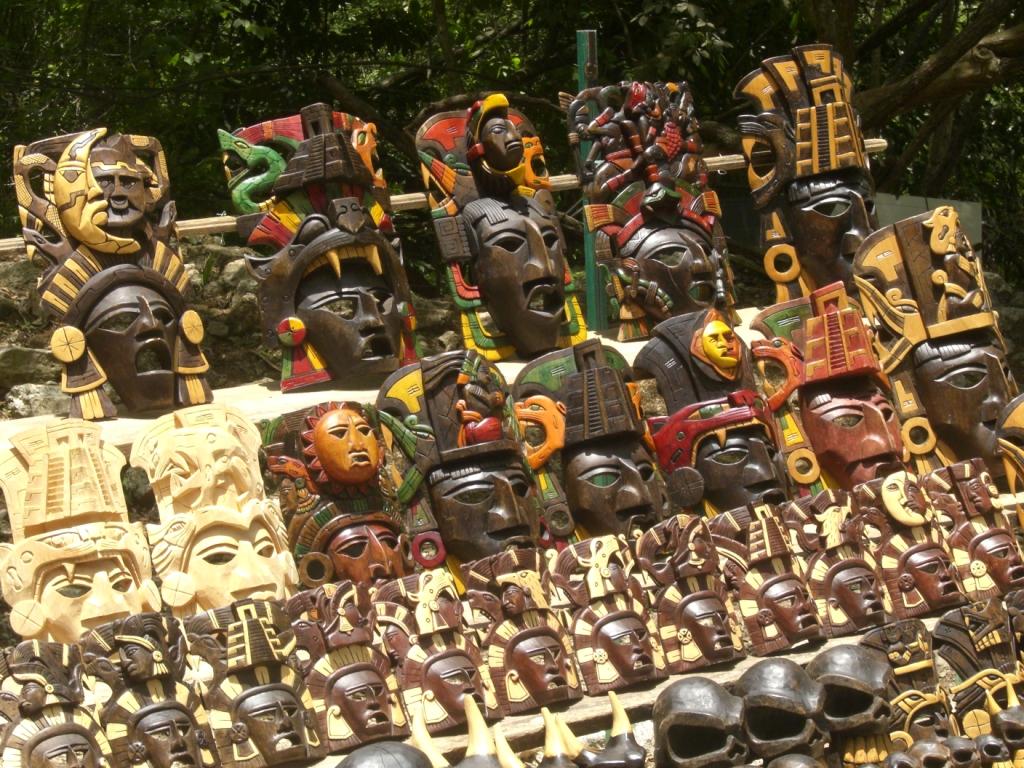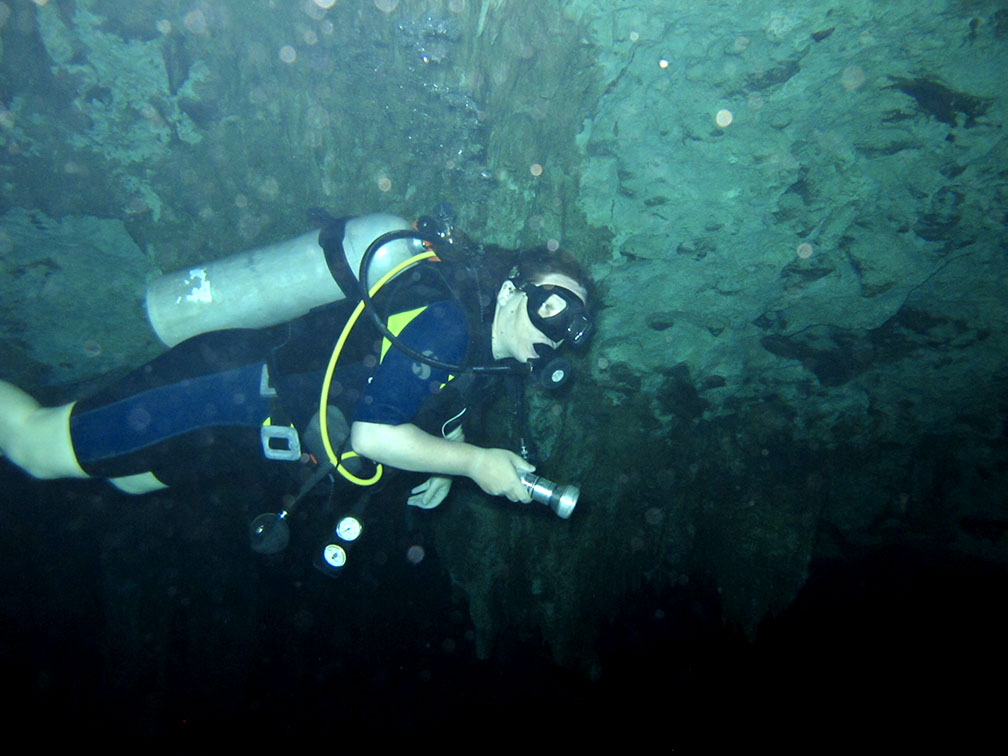“Sombreros, blankets, and tequilla,” says Pablo, without even thinking, in response to my question about the most popular souvenirs in Mexico. But, he hastens to add, here in the heavily Maya Yucatan Peninsula, tourists can buy some interesting souvenirs that aren’t available elsewhere in Mexico. Some of them are one-of-a-kind, or at the very least, handmade. Many have cultural associations. And prices are low. My ears perk up: This is my kind of shopping spree.
In Your Bucket Because…
- In buying many of these hand-made items, your money goes directly to the creators.
- As souvenirs go, these are mico-location specific, unique to the Yucatan Peninsula
- Good for: Culture and history buffs looking for something unusual and authentic.
Souvenirs of the Maya Culture
The once-mightly civilization of the Maya exits in Mexico and a few neghboring countries in both the past and present tenses. In the past tense, we have scores of important archaeological sites, many of them with Unesco World Heritage Site designation. In the present tense, we have small villages tucked away in the jungle, where the Mayan language is still spoken, but where ancient rites and traditions have given way to outside influences ranging from Christianity to satellite dishes.
In 2012, a spotlight shone on the Maya world, owing to the end-of-the-world predictions of its ancient calendar. According to Pablo and other Maya I spoke to, the translation is more accurately “end of an era.” Rather than fearing the end of time, today’s Maya are preparing for what they hope will be a new and better age. Time, they say, will tell.
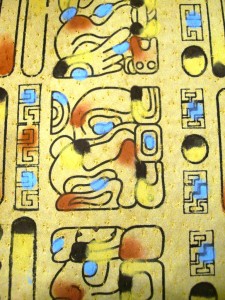
So, appropriately, we begin our hunt for Mayan souvenirs with calendars:
- Circular calendars are usually made in ceramic, but sometimes cast in resin: Presumably if you know how to use and read them, you can count down to the end of time. Costs start at about $10 or $20, depending on where you are shopping and your bargaining skills.
- Masks are also made in ceramic and resin, as well as wood, and in some cases, they contain calendar symbols or entire calendars as part of their decoration. Wooden masks are carved and colorfully painted, and in some stalls you can buy them directly from the person who made them. A painted wooden mask might cost in the $25 range. The molded and ceramic masks are a little less, depending on size.
- One of the more unusual souvenirs I picked up was a deerskin scroll on which my name and birthdate was custom inscribed in Maya characters and numbers. The Maya numerical system is somewhat akin to Roman numbers, but the calendar is a lot more complex, and and it takes a lot of writing to inscribe a date. But the result is a unique and interesting wall piece suitable for framing. These are available at Chichen Itza, at one of the stalls by the entrance gate Ask your guide before going in and the scroll will be ready for you to take home when you leave. Cost is $30.
Maya Pottery
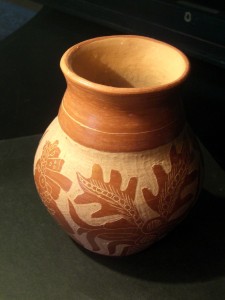
The Maya were known for four achievements (at least): They were one of five ancient civilizations to develop a system of writing (the other ancient writing systems were Chinese characters, Indian Sanskrit, the Sumerian alphabet, and Egyptian hieroglyphics). They built pyramids. The were experts in astronomy, mathematics, and time measurement. And they were expert potters.
The Maya created one of the most important ceramic traditions in the ancient world. A Brazilian ceramicist living in a Maya village tells the story: He came to Mexico expecting to find some relics or remnants of the ancient traditions still alive in the culture, but after two years of visiting Maya villages throughout the most remote reaches of the Yucatan, had to admit that he’d found not so much as a shard that indicated that any part of the tradition still survived.
So he decided to reinvent it, forming pottery collectives in Maya villages where Maya learned to make pots, plates, and decorative items using ancient traditions, techniques and glyphs. (The students also get to use contemporary glazes and paints, but that’s distinct from their studies of historically accurate methods — “for fun and to creatively express themselves.”) Pots and other objects can be bought directly from the collective: Prices range from a few dollars to $50 or $60, for small to medium size pieces, and more for larger, more complex pieces.
Fifth Avenue in Playa del Carmen
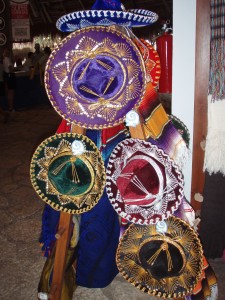
For dedicated shoppers, a don’t-miss destination is Fifth Avenue in Playa del Carmen, the central tourist town of the Riviera Maya. This is a bustling, hustling street, filled with stores in all price ranges and vendors drumming up business. Tequilla, Cuban cigars (still illegal for American to import, by the way), colorful fabrics and blankets, handcrafts, and kitchy souvenirs sell side by side beach wear, T-shirts, and designer goods. As with any busy shopping market, keep an eye on your wallet: You may not be the only one concerned with its contents.
Practicalities
- At Chichen Itza and Tulum, there are active tourist stall markets right outside the main entrances (and in Chichen Itza, there are markets inside the gates,, among the ruins, as well). Our guide suggested bargaining with the aim of getting a 20 percent discount from the initial stated price.
- The Mexican peso (which is confusingly also notated with a $ sign,m just like US dollars) is currently trading at about 20 to the U.S. dollar. US dollars are widely accepted, although change may be given in pesos.
updated January 2021
